The Great Depression was an international economic crisis that effected capitalist countries including Australia. The generally accepted peak of the Great Depression was from 1929 to 1933, beginning with the October 1929 collapse of the Wall Street stock market in New York. During this period, all of South Australia’s sectors were hit hard leading to the highest unemployment rates in the country; a situation which had already been worsening since the early 1890s. This created situations of severe hardship for a large majority of society, with widespread social, political and psychological effects. For many people, hardship and poverty of this scale had not been felt before in Australia.
Causes
The generally accepted downturn of the Great Depression in Australia was 1929, but South Australia was already in a troubled financial position well before this time with unemployment rates being on the rise since the early 1890s. The reason that South Australia fell into depression earlier and with much more intensity than the other states was due to local developments in the South Australian economy, including a severe drought during 1927. The 1920s produced in South Australia a major structural transference of capital and labour from primary industry to the comparatively low short-term productivity of the manufacturing industry; an industry that was heavily affected by falling world costs. Due to this shift, there was a sudden demand for large-scale public investment in non-productive service assets such as housing, electricity, telecommunications, and transport. These assets were all costly and provided little monetary return on investment, furthermore they required large scale borrowing of overseas capital, and in South Australia, government spending and borrowing were higher per capita than any other states. Interest repayments for this debt accounted for 45 per cent of the state’s income by the end of 1930. In order to honour this debt the government made drastic cutbacks in spending and reduced wages. This had a major impact on the standard of living of South Australian people.
Unemployment
Decreasing production rates due to the fall in world costs and consumption meant that unemployment began to rise rapidly during the Great Depression. Around 200 factories closed down in South Australia during the height of the Depression resulting in dramatic labour reductions. Most affected were the building industries, light manufacturing, motor body building industry, and engineering factories such as iron works and foundries. The official figures of unemployment among trade unionists show that South Australia’s yearly average of unemployment was 7.2% in 1927 (national average 7%). In 1928, the yearly average was 15% (national average 10.8%). By 1930, it was 23.3% (national average 19.3%), and by 1932, the figure rose to 34% (national average 29%). These official statistics grossly underestimate the true figures of unemployment because they do not include people who were not represented by the trade unions, such as: unskilled workers, female workers, the elderly and young people. A more accurate estimate of the unemployed in South Australia was somewhere between 39% and 45% by 1932. Even at the official estimate of 34%, South Australia reached the second highest rate of unemployment in the world coming second only to Germany who reached a rate of 43.8%.
Hardship
Hardship during the Great Depression was largely felt by people and their families who suffered a loss or reduction in employment. The working class unemployed, especially the single unemployed, undoubtedly faced some of the most severe hardships. The single unemployed received the smallest ration allowances, and often missed out on jobs due to the preference to give jobs to individuals who supported families. Employed workers also faced challenges with working hours being reduced, and wages in South Australia being lower than that of Victoria, Queensland, Tasmania, and New South Wales. Many people became indebted to landlords, moneylenders, and shop owners (such as grocers and bakers). As money ran low families were forced to draw heavily from their savings just for everyday living. Small business owners and the self-employed experienced a drastic decline in income owing to reduced levels of consumption and production in the economy; this forced some into bankruptcy. Wealthy and powerful families who owned large companies did not experience the level of hardship that the working class did. Large companies increased their dominance through merging with and taking over struggling smaller companies and competitors, this process produced a further widening of the gap between the subordinate and the dominant classes of society.
Despite the intense hardships faced by many people, a culture of camaraderie and a sense of community emerged from difficult situations in which friends and family provided each other with physical and moral support. People drew dignity from personal qualities which could be achieved on a low income such as cleanliness, kindness, and consideration towards others in the community. Areas such as Port Adelaide, Brompton and Bowden despite being known as slum areas were well-known to have a strong community feeling because so many people were suffering from unemployment and the same psychological pressures. These areas also acted as community centres where groups of people would gather to socialise.
Housing
For those who were committed to paying rental or mortgage payments, unemployment or reduced income meant that finding shelter soon became a problem. In the 1933 Census, almost 60 per cent of the unemployed were living in rented accommodation. Others owned their own homes and were paying off mortgages, which put many into arrears leading to some homes being repossessed and re-sold by banks. Some were able to stay in their rented accommodation once landlords began to realise that is was much better to have an unpaying tenant rather than no tenant at all at a risk that all removable contents of the house would be stolen. For those who could not keep up with mortgage or rental payments, forced eviction became a point of much anxiety. In some cases, families were forced to sleep on the street with their furniture until they could find other accommodation. An example of this was reported in the Adelaide Advertiser :
‘For the second night in succession two families slept in front of their former home in Langham Place, Portland (Port Adelaide). The people concerned…were evicted from their home on Monday. They spent all that night and yesterday with their furniture.’ (The Advertiser, 29 March 1934, p.23)
For those who could not find accommodation with friends and relatives, nor afford to pay for their own, homelessness became the only option. In the Adelaide city, areas such as the parklands and the River Torrens became camping grounds for those in desperate need of shelter. Adelaide’s The Mail described the range of makeshift huts built along the banks of the River Torrens as:
‘A weird and wonderful variety of huts, tents, shanties and lean-tos.’ These were made from materials such as ‘hessian, tin, iron, car curtains, bits of screen, tins, and loose bricks.’ Most of these materials were being sourced from nearby rubbish dumps. (The Mail, 26 June 1937, p.9)
These huts were present along the River Torrens up until 1938, when they were removed by the City Council. In 1930, the Labour Hill Government opened up the Exhibition Building as accommodation for the unemployed homeless which housed up to 500 people by 1931. Prior to the Great Depression, housing was not seen to be a government responsibility, which left the poor responsible for keeping up with payments. It was not until 1936 that the government introduced the Housing Trust Bill to provide low-cost accommodation to families. This was initially conceived as a tool for generating employment, lowering rent and the cost of living to gain a cheaper work force which would attract industrial investment in recovering South Australia.
Health
Inadequate diet combined with overcrowded and dilapidated housing of Adelaide’s expanding poor population led to an increase in health problems during the Great Depression. Many rental homes, especially those occupied by the unemployed and the working-class, became seriously deteriorated with poor ventilation and lighting, dampness, major structural defects, and vermin infestations due to the neglect on the part of landlords. Poor health was a result of poor housing conditions where basic sanitation was lacking, and conditions were crowded. Diseases associated with poor living conditions, such as: respiratory infections, infectious diseases (chickenpox, measles), digestive diseases, pneumonia, skin diseases and enteritis (typhoid, dysentery, and diarrhoea), became common occurrences, especially amongst children and the elderly. Children received much smaller rations than adults which led to undernourishment and disease. Sick children flooded the Royal Adelaide Hospital, and people were forced to wait for hours in the heat and rain just to see a general practitioner. The infant mortality rate increased again after being in decline during the early 1920s.
Psychological Impacts
For the people that were most affected by the Great Depression, little was known to them at the time why the situation had occurred. There was no readily available information as to why their worlds had changed so dramatically, or how anything could be done about it. This led to feelings of hopelessness and confusion as majority of people were unable to control the social and economic forces which had changed their lives. For generations, many had been brought up to believe that their worth lay in hard work. During the early 1920s, public figures had condemned the unemployed as inefficient, degenerate and immoral. So it is no surprise that many workers questioned their own worth when they lost their job. Worry and anxiety were characteristic responses to the Great Depression. One Adelaide man when asked if he worried much replied:
‘Yes. You would worry all the time…You would go to bed at night and think: “I wonder what tomorrow is going to bring forth?” That would go on from day to day. You were depressed yourself. The biggest depression was in yourself. Everyone was the same.’ (Broomhill, 1978, p.33)
Unemployed people who received government relief suffered from a high degree of emotional trauma due to a sense of failure, humiliation, and loss of dignity. These feelings were also accompanied with feelings of shock and anxiety immediately following the event of becoming unemployed. There were long held beliefs in society that being honest, keeping out of debt, avoiding charity, and maintaining a certain standard of living were the basic moral and economic values which should guide people’s lives. Employment had an importance which went beyond economic security. Work played an important role in fulfilling the psychological and social needs of the individual, and for providing order in their lives. The search for work was often desperate with sometimes hundreds of people turning up for one job which had been advertised; constant rejection from employers compounded feelings of rejection and the loss of self-esteem. For the people who were long unemployed, these feelings eventually gave way to feelings of resignation and indifference as people began to accept their situation as normal. Despite the feelings of hardship that were felt amongst many people, there were also examples of resilience as people accepted their situation and were able to find happiness through family and community. Very quickly people began to realise that the high values they placed on employment and self-sufficiency were not compatible with the reality of their new economic situation, and despite the embarrassment that followed, many working class and middle-class families were forced to apply for relief or risk starvation.
Relief
Before the Great Depression, social welfare in South Australia was based in private charitable organisations which were mostly founded by religious denominations. Special assistance was only given to the destitute poor. During the Great Depression years, the issue of unemployment took a backseat to the government’s immediate concern of controlling the state’s financial crisis, and its overriding concern for political stability. As the situation became more severe, the government was compelled to come up with new measures of coping. In 1928, the Lord Mayor’s Relief Fund was established to help alleviate the suffering of the unemployed. The committee received donations from the public and distributed these to the people who were the most deserving of relief. Ration recipients were also required to work for their rations under the supervision of local councils. This received much opposition as people argued it was exploitative, and was replacing paid council workers. This was discontinued under Lionel Hill’s Labor government. In 1930, the Unemployment Relief Council was set up to administer funds set aside by the Federal Government for providing relief. By June 1932, 24, 278 South Australian families were receiving relief from the Council. South Australia was much less generous in its relief to the unemployed than the other states, it provided less public works employment, and less relief in the form of food and rations. The weekly ration allowance for a single adult was 5s 3d which provided provision for goods such as meat, bread, sugar, jam, oatmeal, tea, raisins, and soap, but none for accommodation, transport, or clothing. Half rations were given to children under the age of fourteen. Such a small ration allowance was difficult to live off, especially when people also had to meet rent payments. Without citizenship rights, Indigenous Australians were denied access to government relief, and were moved onto government reserves where they were expected to fend for themselves overlooked by the Aborigines Protection League. The closing of farms or the reduction of labour meant that many Indigenous people who had found work in the primary industry also felt the broad effects of the Great Depression, but were left with little support.
Resourcefulness
While the government relief package provided for basic needs, this was often not sufficient enough for people to maintain the standards of living they were used to. One of the most striking features of the Great Depression was the skilful and resourceful manner in which people adapted to their situations. Many were not prepared for the sudden loss of unemployment so they had to make do with what they had, or discover new ways to source food and materials. Over time, household and personal items wore out, this especially applied to clothing which was not a part of the Government relief package. This especially applied to footwear as many people walked long distances every day in search of work or to collect rations. In Port Adelaide, it was reported that some children were dressed simply in a bag with holes cut out for the head and arms. Many people went without underwear, and the clothes that they did wear were worn and tattered. In winter, people went without warm clothes, and bed coverings; some used materials such as wheat sacks as substitutes for blankets. Some charitable organisations took to distributing material for clothing to those that needed it most, but of course this was limited due to the demand.
A serious problem for those facing poverty was the lack of fuel and power for the home. Families received firewood in their ration but this often did not meet all of the requirements for cooking, washing, and providing warmth. People collected coal from along railway lines, cow manure, sawdust, and driftwood from the beach to supplement the firewood ration. It was also common for people to grow vegetable gardens to supplement food rations, and some kept animals such as chickens and cows in their backyards. Privately grown produce could be sold to neighbours for some extra income.
Extra work
During the Great Depression, increasing numbers of women were seeking work which challenged traditional assumptions that women were primarily responsible for child rearing and domestic life. Women were able to make economic contributions during their husband’s unemployment, but these contributions were still treated as marginal in the mainstream economy as not to undermine the husband despite them making up 20.4 per cent of the workforce in 1933. Women used their skills and countered hardships by offering services such as dressmaking and baking for some extra income. Men also engaged in work outside of the formal economy helping friends and neighbours with services such as house repairs, wood-collecting, and rabbiting. These types of activities restored people’s sense of purpose and moral worth. Port Adelaide woman Mary Smith commented:
‘I thought it (the Great Depression) brought out the very best in some people. Women who in their own homes made do magnificently. Men who had no hope of getting any work with the wages being paid, they’d turn their backyards into little gardens. They’d come round with a basket of lettuce or you could buy two penn’th of carrots from them.’ (Marsden, Port History Project, 1977).
Young people found it difficult to break into the workforce due to low number of job openings, and remained at school for longer periods. Children helped their parents by collecting supplies such as firewood, or visiting houses selling goods. People who knew how to play a musical instrument could earn some extra cash as musicians or street performers. One of the best known street performers was Piccolo Pete, a man who would play a tin whistle in many locations around Adelaide and who had no fixed address.
Farming
The international decline in export prices affected South Australia in particular due to its heavy reliance on primary produce exports, particularly wheat and wool. For the rural industry, these impacts were greatly exacerbated by a severe drought in 1927 which continued through to 1930 badly affecting regions such as the West Coast, and leaving farmers without crops for almost 4 consecutive years. After the drought broke production increased again but international prices were still low. Rural families generally fared better than unemployed workers in the city. They received higher relief payments, and could rely on having shelter and a means for producing food, but they did still struggle to pay high mortgage payments. Farmers received varying forms of government assistance due to the fear that the collapse of primary industry would have disastrous effects on the state’s economy. So the government took great lengths to keep farmers on their land.
Political Groups
During the peak of the Great Depression, the Labor Party held office in South Australia (1930-1933) with Lionel Hill as Premier. The Hill Labour government experienced reduced power due to lack of tax revenue and declines in economic activity. These factors along with growing unemployment, hunger, protests and police reprisals spawned new radical ideas for managing society with the rise of political extremist groups. Extremist groups were not all that successful in South Australia because at a risk of losing their rations or arrest, most people did not involve themselves in political activism.
The two main activist groups that did exist in South Australia were the Industrial Workers of the World (IWW) and the Communist Party, but these groups never had large memberships. Trade Union memberships also declined as unemployment increased. Communist party and IWW believed that the overthrowing of capitalism could be achieved by rallying together the thousands of people who were unemployed to achieve a social revolution. The social revolution never materialised for a number of reasons. The unemployed were too isolated, and had no economic power, the only power they had for change was to demonstrate in the streets.
Port Adelaide was the biggest centre for unrest due to the high numbers of unemployed workers. One such conflict was known as the ‘Waterside Worker’s strike’ which was a conflict between shipowners and wharf labourers caused by shipowners employing volunteer labour in an attempt to break the South Australian Branch of the Waterside Worker’s Union. This left hundreds of union wharf labourers out of work. In 1929 clashes would break out between the unemployed wharf labourers, volunteers and police with crowds of up to three thousand people involved.
From 1927 until 1931, other demonstrations held included a march of around seven hundred unemployed workers through Adelaide city singing revolutionary songs and wearing red flowers and ribbons. The Communist Party and the IWW held several joint demonstrations in 1930 and 1931 which were mostly attended by single unemployed men. These demonstrations reflected the growing deterioration of relations between the unemployed and the Labor government, and culminated in one of the most violent demonstrations of the Great Depression, the Beef Riot on January 9, 1931. Following the Beef Riot, the Communist Party lost much of its power due to the effectiveness of the police campaign against them. Eventually political activity became limited and any demonstrations held were only very small. Following the Beef Riot, the unemployed lost a lot of their political power.
Recovery
South Australia was slow to recover from the Great Depression with its effects lingering on into the post-World War II period. As the economy began to recover in the mid-1930s, prices of food, clothing, and housing began to rise again which caused continuing problems for those who were unable to regain employment, and there was less sympathy in the community and from charitable agencies for the unemployed. The lack of trade apprenticeships during the Depression led to a shortage of skilled tradespeople during the post-war period and financial hardship continued for those who had borrowed large amounts of money or had mortgages. Those who had lost many possessions during the Great Depression continued to struggle to get back on their feet, and elderly workers who went into retirement without financial means continued to live in poverty. In general emotional stability improved for those that were able to find reliable work, but the psychological effects of the Depression were prolonged as many became obsessed with economic security due to the trauma they had faced during periods of unemployment.


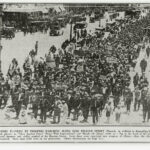

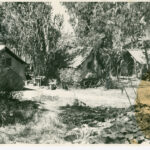

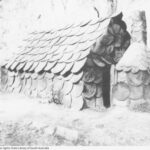
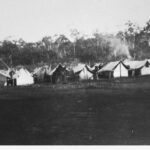
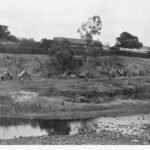
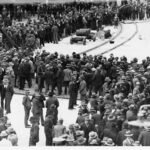

Comments